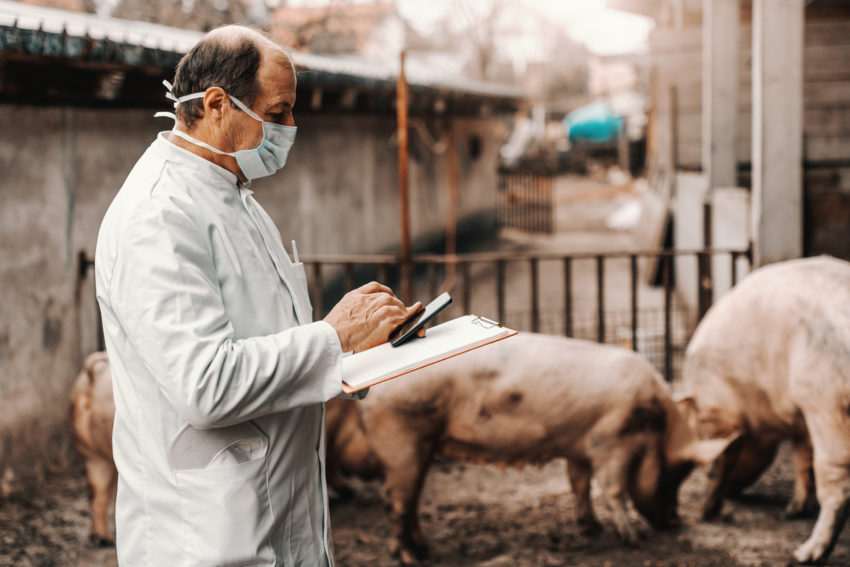
Share On Social!
Our food systems affect our health in good and bad ways.
For example, some of the most severe health impacts of food systems trace back to some of the core industrial food and farming practices. These include chemical-intensive agriculture, intensive livestock production, and mass production and marketing of processed foods.
That is why the International Panel of Experts on Sustainable Food Systems (IPES Food) published a report to identify five ways our current food systems make us sick, seven challenges to understanding and addressing them, and five leverage points for building healthier food systems.
Here are five ways our current food system makes us sick:
1. People Get Sick Because They Work in Unhealthy Conditions
Pesticides are responsible for an estimated 200,000 acute poisoning deaths each year. About 99% of these deaths occur in developing countries.
About 71% of poisonings could be prevented through improved chemical safety.
Other conditions are linked to pesticides and weed killers. Long-term exposure to Roundup, for example, is linked to cancer development. California will soon ban widely utilized pesticide, chlorpyrifos, which is linked to brain damage.
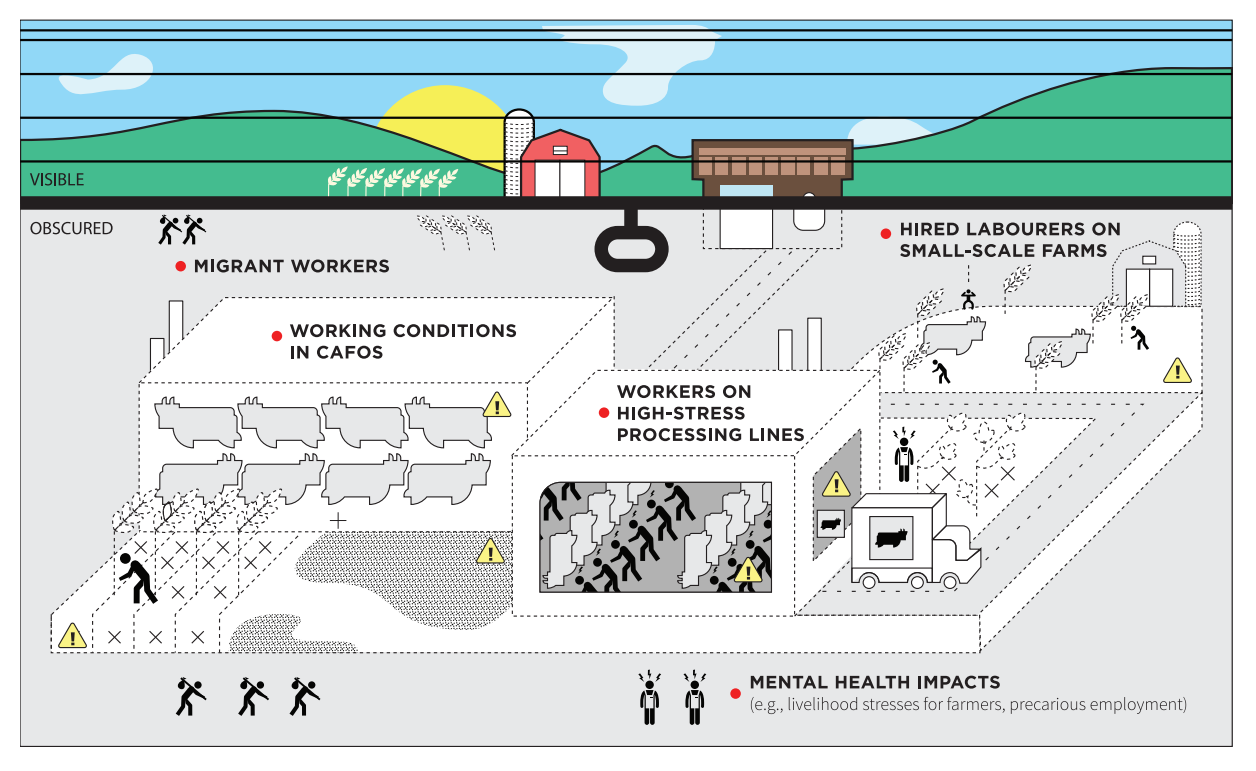
Chemical exposure also can lead to the development of Toxicant-Induced Loss of Tolerance (TILT), an illness that involves a host of severe side-effects. The Hoffman TILT research team at UT Health San Antonio has an online assessment tool—the Quick Environmental Exposure and Sensitivity Inventory (QEESI)—to help people assess their exposure.
Exposure to airborne substances, such as fertilizers and animal waste, also contribute to various respiratory diseases. Equipment used on farms as well as in food processing, distribution, and retail contributes to injuries and fatalities.
Additionally, the mental health impacts of working in stressful conditions can lead to exhaustion, insomnia, depression, and alcohol and drug abuse. In a 17-state sample in 2012, the farming, fishing, and forestry industries had a suicide rate of 84.5 per 100,000 people. That is almost five times as high as the suicide rate of the general population.
“The prevalence of migrant labor in agricultural work in many countries — and the resulting cultural and language barriers — tends to exacerbate these risks, through, for example, misunderstandings of safety precautions, misinterpretation of pictograms, or unsafe use of hazardous tools due to inadequate training and supervision,” the IPES report states.
However, under-reported and under-estimated occupation hazards leave major blind spots in the evidence base, particularly among vulnerable populations.
2. People Get Sick Because Of Contaminants in the Water, Soil, or Air
Nitrate and phosphorus pollution from chemical fertilizer use and feedlot runoff is a major health risk.
These chemicals are associated with TILT, bladder cancer, thyroid cancer, non-Hodgkin’s lymphoma, structural birth defects, spontaneous abortions, colorectal cancer, ovarian cancer, thyroid dysfunction, and macular degeneration.
Insensitive livestock production amplifies the emergence and spread of zoonotic infectious diseases, such as avian influenza (H5N1) and severe acute respiratory syndrome (SARS).
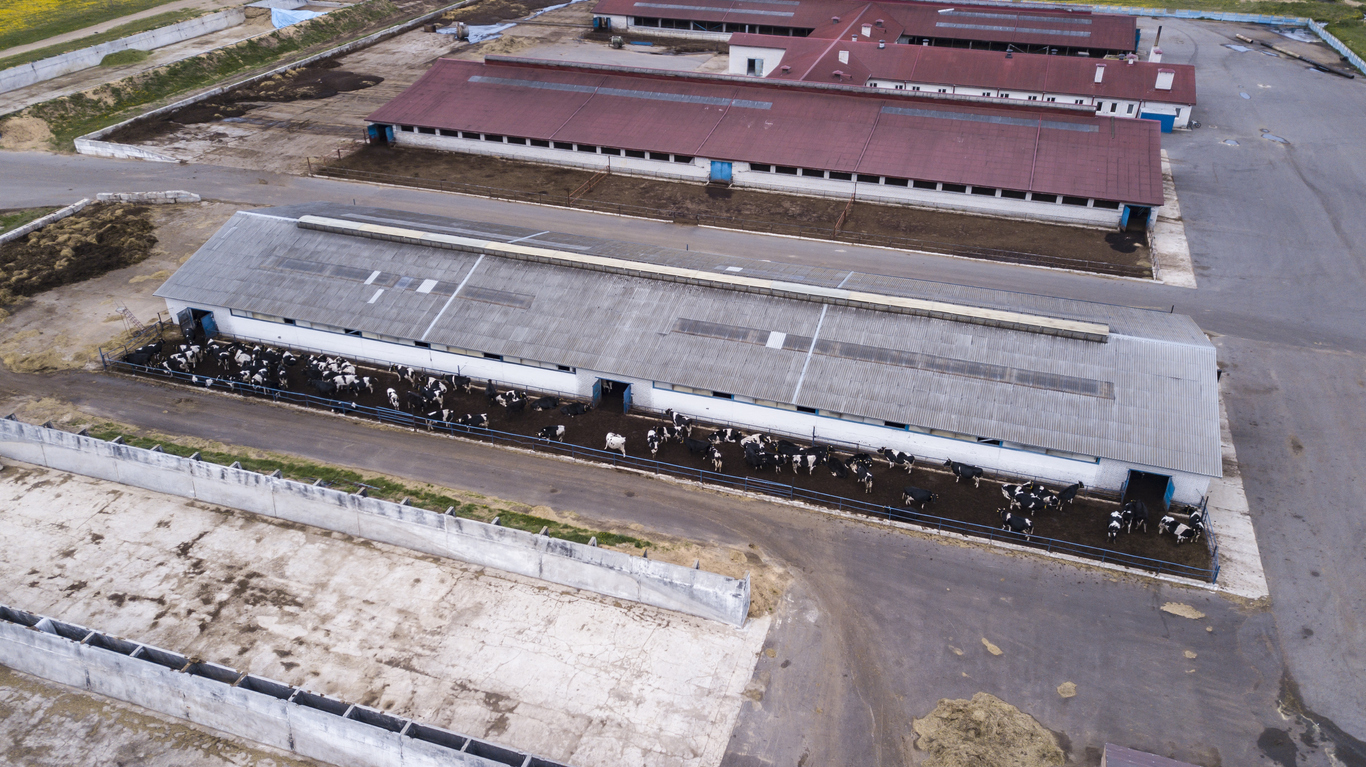
In industrial feedlots of concentrated animal feeding operations (CAFOs), the high number and density of genetically uniform animals, and the concentration of waste, creates a favorable environment for pathogens to spread, adapt, and reproduce at a rapid pace, according to the report.
When bacteria are routinely exposed to antibiotics at low doses, a common practice on intensive livestock farms, bacterial strains with minor mutations are able to survive and rapidly reproduce, leading to antibiotic resistance. Antimicrobial resistance can be transmitted to humans through water, the use of animal feces as a fertilizer, dust, and direct transmission through meat.
In the United States, antimicrobial-resistant infections caused 8 million additional hospital days and health costs of $20 to $34 billion annually. More than 2 million Americans become ill with antimicrobial resistant infections each year, resulting in more than 23,000 deaths, according to the IPES report.
There are roughly 800 chemicals that function as endocrine-disrupting chemicals, which interfere with hormonal systems. These chemicals are found in pesticides; the hormones used in meat, poultry, and dairy production; food preservatives; and the lining of canned foods and plastic containers and increase risk of cancer, obesity, diabetes, and adverse reproductive effects.
Agriculture has been identified as the largest contributor to air pollution in many regions of the world, including Europe, Russia, Turkey, Korea, Japan, and the Eastern United States.
Agricultural emissions through livestock operations and fertilizer use and are associated with acute lower respiratory illness, cerebrovascular disease, ischaemic heart disease, chronic obstructive pulmonary disease, and lung cancer. Additionally, pollution incurred through the trucking and shipping of food and feed are associated with health risks and carbon emissions.
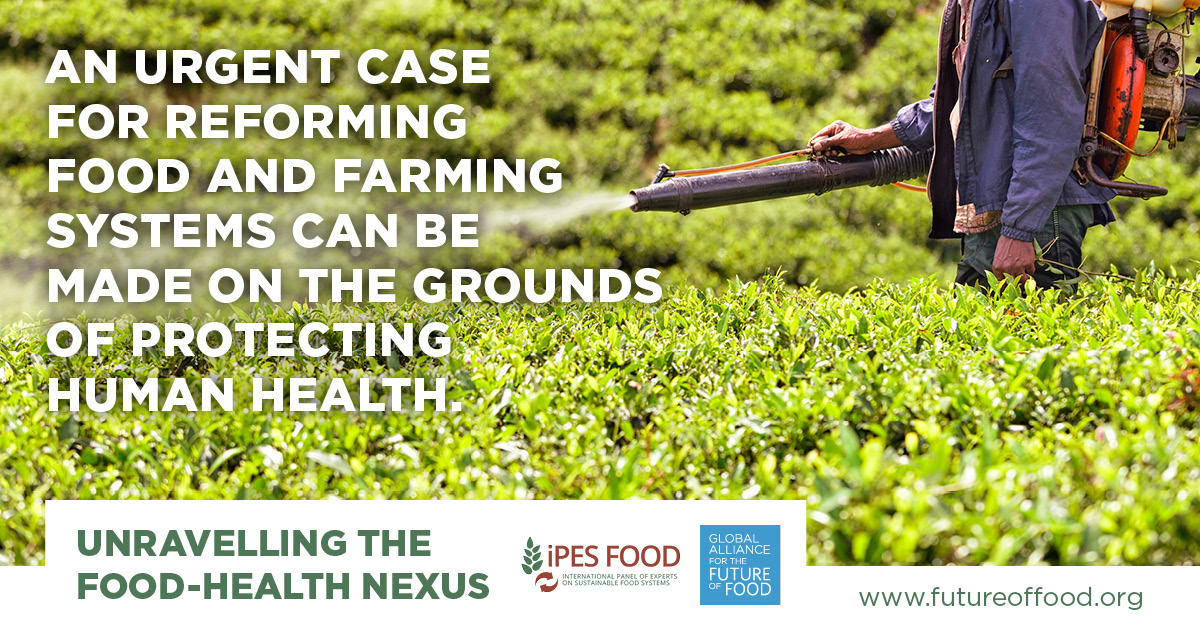 Pregnant women, children, the elderly and other vulnerable groups have lower toxicity tolerance levels thus be at higher risk for environmental contaminants and TILT.
Pregnant women, children, the elderly and other vulnerable groups have lower toxicity tolerance levels thus be at higher risk for environmental contaminants and TILT.
Unfortunately, only a fraction of the many manufactured chemicals used have been tested for endocrine-disrupting effects and the US government does not systematically test or regulate air pollution around CAFOs. Risks of continuous low-dose exposure and/or exposure to multiple pollutants and contaminants are unknown. Moreover, transport-related emissions tend to be overlooked when evaluating the environmental and social impacts of food production.
3. People Get Sick Because Specific Foods They Eat Are Unsafe for Consumption
Ingestion of contaminated foods is the most direct and obvious health impact of our current food system.
Bacteria, viruses, chemical agents, toxins, and parasites lead to gastrointestinal, respiratory, neurological, and other illnesses.
In the U.S., poultry accounts for the most deaths from foodborne pathogens, followed by dairy.
From 1998 to 2008, an estimated 47.8 million U.S. illnesses, 127,839 hospitalizations, and 3,037 deaths per year have been attributed to foodborne pathways.
Though representing only 9% of the global population, children younger than 5 incur 43% of the disease burden of contaminated food.
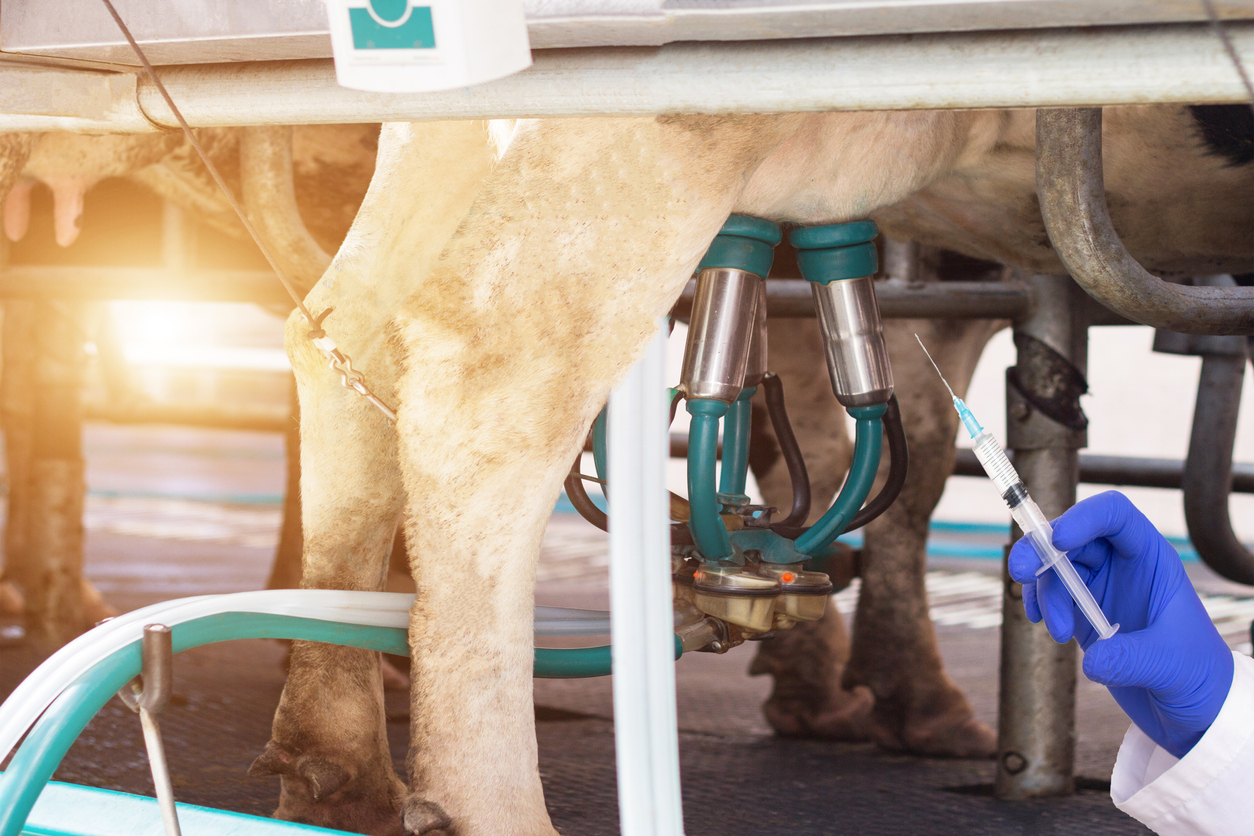
Food allergies and food intolerances have been directly linked to food processing, such as irradiation, homogenization, thermal processing, fermentation and hydrolysis, and resulting changes in molecular composition.
Unfortunately, due to differences in quality of detection systems, data collection, and reporting across countries and over time, gaps in the knowledge base on underlying causes and health impacts of contaminated, unsafe, and altered foods remain.
Inadequate regulatory authority for food additives in the U.S. means that, of the approximately 6,200 current affirmative safety decisions on food additives, 60% were made by manufacturers and trade associations rather than federal agencies.
4. People Get Sick Because They Have Unhealthy Diets
Unhealthy dietary patterns are bad news for health.
Poor diets─characterized by overconsumption of animal products, a greater proportion of ultra-processed foods are particularly unhealthy foods high in added sugars, sodium, saturated fat, and trans fat; and low in fruits, vegetables, pulses, whole grains, and nuts─have become increasing prevalent over recent decades.
An unhealthy diet is the leading risk factor for premature death, according to a recent study.
They also contribute to escalating rates of obesity, diabetes, heart disease, cancer, osteoarthritis, metabolic syndrome, and reproductive, gall bladder and liver diseases.
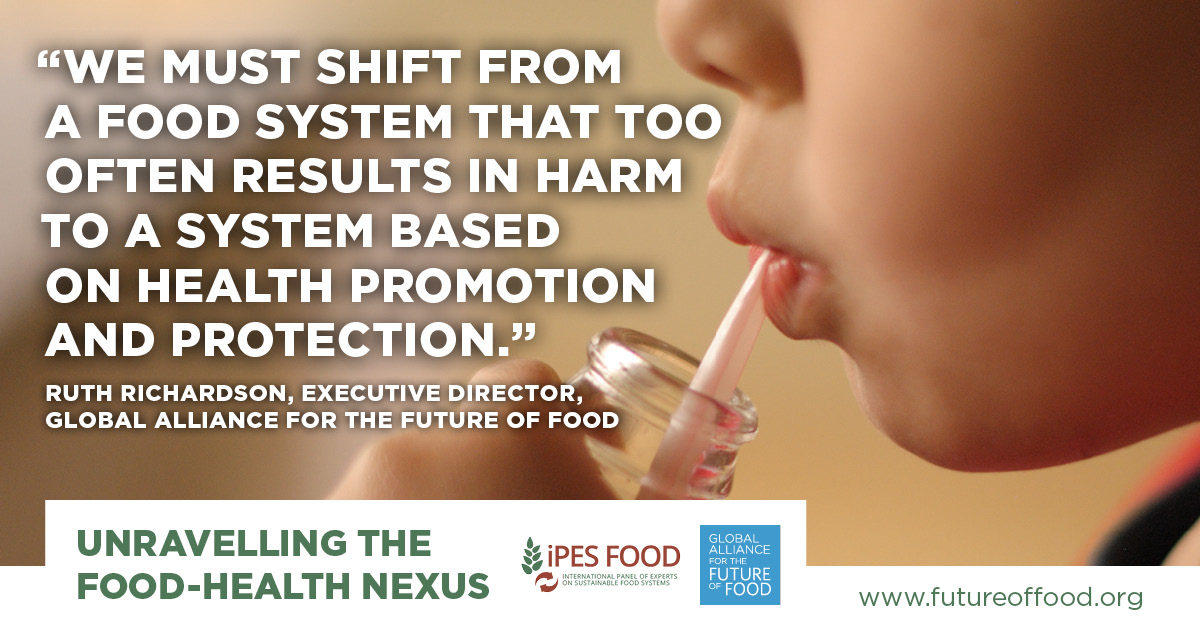 Staying away from ultra-processed foods is important. These foods are “industrial formulations which, besides salt, sugar, oils, and fats, include substances not used in culinary preparations, in particular additives used to imitate sensorial qualities of minimally processed foods and their culinary preparations.”
Staying away from ultra-processed foods is important. These foods are “industrial formulations which, besides salt, sugar, oils, and fats, include substances not used in culinary preparations, in particular additives used to imitate sensorial qualities of minimally processed foods and their culinary preparations.”
Unfortunately, industry-sponsored research has muddied the nutrition science waters.
Moreover, consumers food choices are limited by the economic, cultural, physical, and political conditions that make up the food environments in their neighborhoods, schools, and workplaces.
5. People Get Sick Because They Can’t Access Adequate, Acceptable Food at all Times
The effects of undernourishment and malnutrition are not controversial.
Stunted growth, compromised neurodevelopmental capacity, and death are consequences of inadequate intake of calories and proteins in childhood.
Across the lifespan, insufficient intake of micronutrients are linked to reduced immune function, loss of productivity, hypothyroidism, hypertension, heart disease, diabetes, arthritis, asthma, tuberculosis, depression, and overall poorer health.
On global, regional, national, community, and household levels, food security is achieved when “all people, at all times, have physical and economic access to sufficient, safe, and nutritious food to meet their dietary needs and food preferences for an active and healthy life,” according to the report.
One conservative estimate of the health costs of hunger and food insecurity in the United States, excluding missed workdays and nonmedical costs, still amounted to $67 billion per year in 2005 dollars, according to the report.
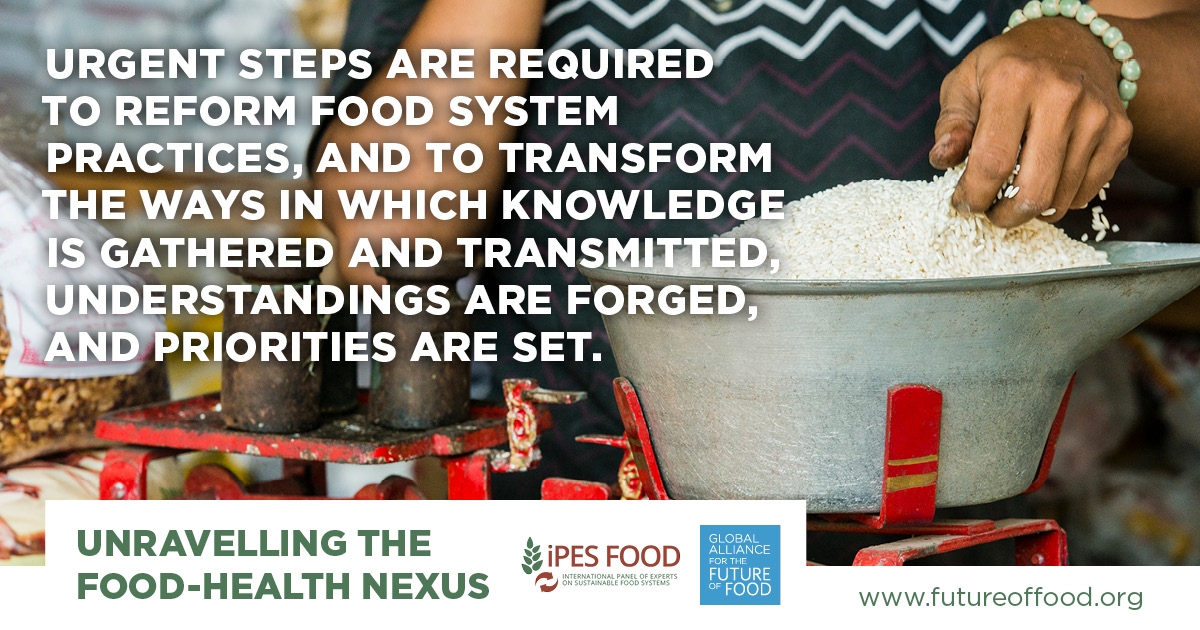
Unfortunately, the underlying causes of food insecurity are controversial, rooted in socioeconomic, environmental and political factors.
Poverty, food price shocks, natural disasters, climate change, agricultural problems, and poor governance and policies contribute to food insecurity.
However, many of these issues are multifaceted, particularly among vulnerable populations. Latinos, for example, tend to live in food swamps with an abundance of unhealthy fast food options and a void of grocery stores with healthier options, according to a Salud America! research review.
Lack of income to purchase healthy food is not the only poverty-related factor. Poverty also threatens food security through its association with poor sanitation, inadequate healthcare, and poor childcare and feeding practices at the household level.
Additionally, poor land use and agricultural practices resulting in livestock disease, loss of diversity, environmental degradation, air and water pollution, and a decline in available farming land can lead to food scarcity and higher food prices.
What Can We Do?
Spread the word about how our current food systems make us sick using the social media messages below and the IPES Food images above:
- How do food systems impact health? New report points to sources of costly health impacts. #FoodSystems4Health #TrueCostAccounting https://salud.to/sickag
- We need to transition from #foodsystems that create harm to one that provides health. #FoodSystems4Health #PlantBased https://salud.to/sickag
- How we grow, distribute, market, prepare, eat, and dispose of food has costly health impacts. #TrueCostAccounting https://salud.to/sickag
- Urgent steps are needed to reform the food system practices that make people sick. #GoodFoodMovement https://salud.to/sickag
- Worldwide, the agricultural sector is one of the most hazardous to human health. #FoodJustice https://salud.to/sickag
- To improve health, we need to refocu attention on the food environment rather than on individual food choices. #FoodJustice #SDOH https://salud.to/sickag
An urgent case for reforming food and farming systems can be made on the grounds of protecting human health.
The monumental task of building healthier food systems requires more democratic and more integrated ways of managing risk and governing food systems.
Learn about the following five ways to build healthier food systems:
- Promoting food systems thinking at all levels;
- Reasserting scientific integrity and research as a public good;
- Bringing the positive impacts of alternative food systems to light;
- Adopting the precautionary principle; and,
- Building integrated food policies under participatory governance.
Watch how integrative food policy can help!
Explore More:
Healthy FoodBy The Numbers
1
Supermarket
for every Latino neighborhood, compared to 3 for every non-Latino neighborhood



